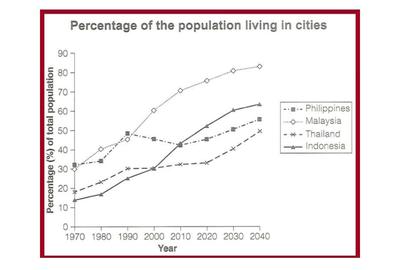- Home
- Reading Lessons
- Identify Writers Opinion IELTS Reading
Identify Writers Opinion Type IELTS Reading Question
In questions where you have to identity the writers view or opinion in IELTS academic reading, you are given a statement from the reading and you have to decide whether it matches the authors claim, contradicts it, or is not given.
By 'Not Given', this means that from looking at the reading, you are unable to say whether it reflect the views of the writer or not i.e. the information is not there.
Before we practice, these are some guidelines on answering identifying the writers claims type questions and the pitfalls to avoid.
Guidelines for Answering IELTS Reading "Identifying the Writer's View" Questions
Follow these steps to effectively answer these types of question and get a high score:
- Carefully read the instructions – Make sure you understand whether the question is asking for a True/False/Not Given (factual) response or Yes/No/Not Given (writer's viewpoint) response.
- Find keywords – Identify key terms or phrases in the statement and find them in the passage. This will help you to find where the answer is more quickly and so speed up.
- Grasp the context – Examine the surrounding text of the keywords to comprehend the context and the writer's opinion or stance.
- Avoid assumptions – Base your response solely on the information given in the passage, without using prior knowledge or assumptions.
- Practice regularly – Familiarising yourself with sample questions through consistent practice will help you get better at this question type and improve your precision.
Pitfalls to Avoid
Follow the steps above, and you should then avoid making these common mistakes when you answer identify the writers opinion type questions:
- Confusing NO with NOT GIVEN: Some people struggle to determine if the information is directly contradicted (NO) or simply not mentioned (NOT GIVEN).
- Difficulty finding the relevant information: With such long passages, it can be tricky to locate the specific part of the passage that answers the question, causing wasted time and frustration.
- Misinterpreting the passage: A student may misunderstand the passage, mistakenly thinking it supports a YES answer when it actually supports a NO answer.
Practice
Take a look at this excerpt from a reading about urban green spaces.
The Role of Urban Green Spaces in Sustainable Cities
In an era characterised by rapid urbanisation, the importance of urban green spaces has gained increasing recognition among city planners, environmentalists, and public health experts. Green spaces, including parks, community gardens, and natural reserves, play a crucial role in enhancing urban sustainability. These areas contribute to environmental health, social well-being, and economic stability, making them indispensable elements of modern city planning.
One of the most significant contributions of urban green spaces is their role in improving environmental quality. Vegetation in cities helps mitigate air pollution by absorbing harmful pollutants such as nitrogen dioxide (NO2) and particulate matter (PM2.5). Additionally, trees and plants play a crucial role in carbon sequestration, thereby reducing greenhouse gas emissions. Furthermore, green spaces act as natural cooling systems by providing shade and facilitating evapotranspiration, which helps to counteract the urban heat island (UHI) effect. The UHI effect occurs when urban areas experience higher temperatures than surrounding rural areas due to human activities and the prevalence of heat-absorbing surfaces like asphalt and concrete.
Another crucial environmental function of urban green spaces is their contribution to water management. Green areas help reduce the risk of flooding by enhancing soil permeability and promoting groundwater recharge. By contrast, urban landscapes dominated by impermeable surfaces lead to increased surface runoff and higher incidences of flooding. Thus, integrating green infrastructure, such as rain gardens and vegetated swales, into urban environments can significantly improve water retention and drainage capacity.
Question
Do the following statements reflect the claims of the writer?
YES – if the statement reflects the claims of the writerNO – if the statement contradicts the claims of the writerNOT GIVEN – if it is impossible to say what the writer thinks about this
No
Not Given
No
Not Given
No
Not Given
No
Not Given
Answer Discussion
City planners, environmentalists, and public health experts are critical to the success of modern city planning. (NG)
- The reading says that the above people are recognising the importance of green spaces in cities and that green spaces are indispensable elements of modern city planning. It does not say anywhere though that these groups of people are very important to the success of city planning.
By capturing and storing harmful contaminants from the air, urban greenery reduces pollution. (Y)
- It says this in the reading, which is the same thing: "Vegetation in cities helps mitigate air pollution by absorbing harmful pollutants" and "trees and plants play a crucial role in carbon sequestration".
The large amount of asphalt and concrete surfaces in urban areas is the main cause of the UHI effect. (NG)
- The reading says that "human activities and the prevalence of heat-absorbing surfaces like asphalt and concrete" contribute to higher temperatures and thus the UHI effect, but it does not tell us that the prevalence of heat-absorbing surfaces like asphalt and concrete is the main cause.
Impermeable surfaces in cities greatly enhance water absorption and drainage efficiency. (N)
- Impermeable surfaces in cities don't enhance water absorption and drainage efficiency - permeable ones do.
Comments
Any comments or questions about this page or about IELTS? Post them here. Your email will not be published or shared.
Band 7+ eBooks
"I think these eBooks are FANTASTIC!!! I know that's not academic language, but it's the truth!"
Linda, from Italy, Scored Band 7.5













